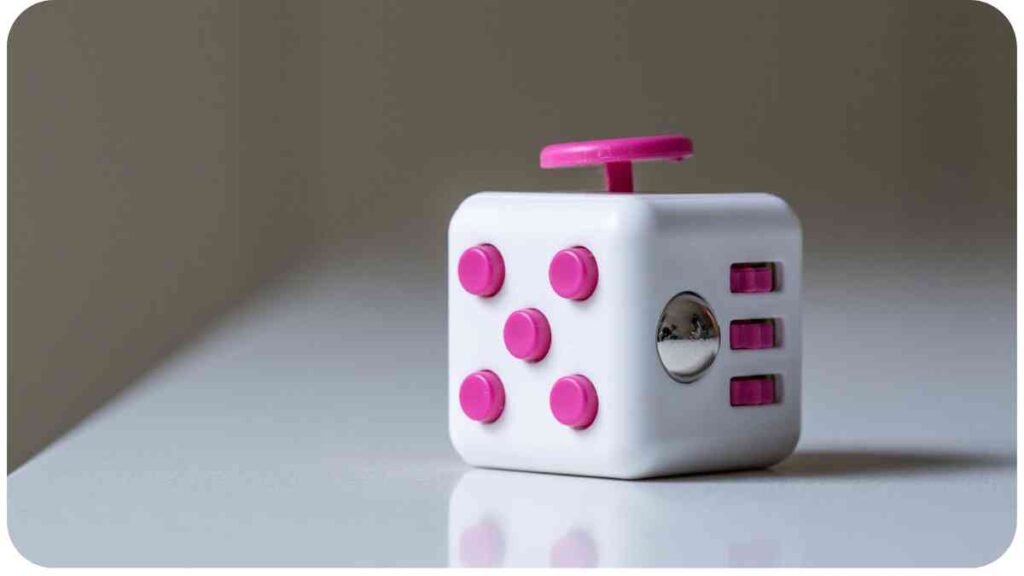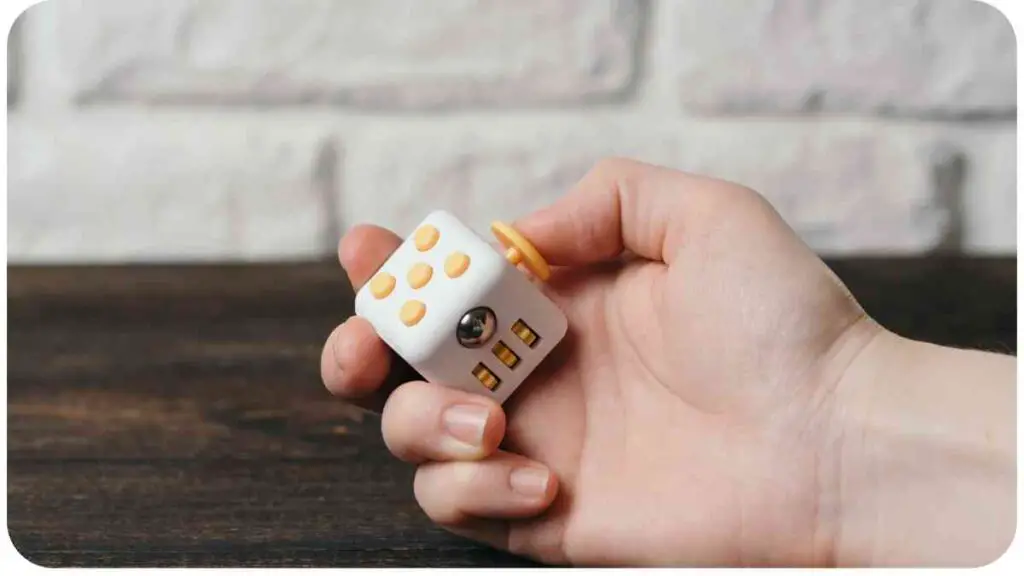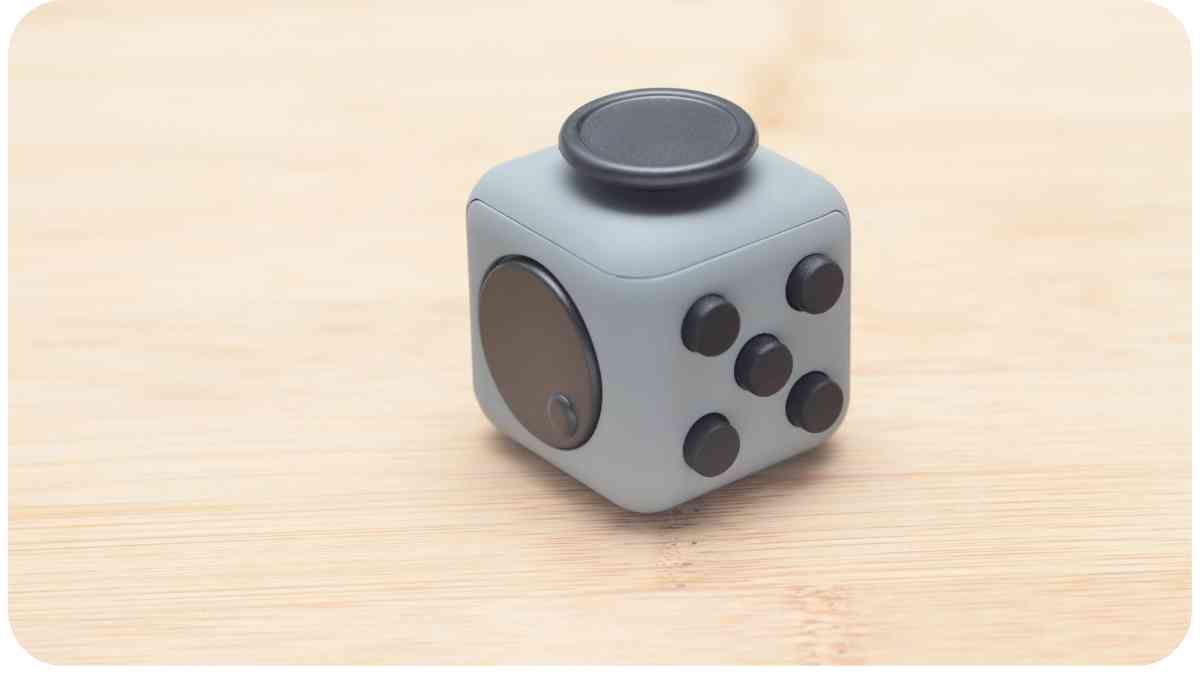Fidget cubes have gained immense popularity as stress-relieving tools in recent years, offering a variety of features, including satisfying button clicking. However, you may encounter situations where your fidget cube is not clicking as it should.
This article will guide you through the common issues that may cause your cube to lose its satisfying click, and how to fix these problems. By learning how to troubleshoot and maintain your fidget cube properly, you can ensure its longevity and optimal performance.
| Takeaways |
|---|
| 1. Proper lubrication can help restore clicking functionality. |
| 2. Misaligned buttons may require realignment for proper clicking. |
| 3. Worn-out springs should be replaced to improve clicking sensation. |
| 4. Check for loose internal parts and tighten connections if necessary. |
| 5. Regular cleaning prevents dust and debris from hindering button movement. |
| 6. Store the fidget cube in a clean and dry place to maintain its functionality. |
| 7. Avoid using excessive force on the buttons or switches. |
| 8. Use the fidget cube correctly, following its specific instructions. |
| 9. Troubleshoot specific issues with a troubleshooting guide. |
| 10. Consult the manufacturer or professionals if unsure about repairs. |
Understanding Fidget Cubes
What is a Fidget Cube?
A fidget cube is a handheld device designed to help individuals relieve stress, improve focus, and manage anxiety. It typically consists of various buttons, switches, dials, and other interactive components that offer sensory stimulation and occupy restless hands.
Enhance your child’s development with toys suitable for their age. Learn about the importance of age-appropriate sensory toys and make informed choices for your child’s sensory play.
Components of a Fidget Cube

Fidget cubes are composed of different components that provide different tactile and auditory experiences. Some common components include:
| Component | Description |
| Buttons | Small, clickable buttons to provide a satisfying clicking sensation. |
| Switches | Toggle switches that can be flipped back and forth. |
| Joystick | A miniature joystick that can be moved in various directions. |
| Spinners | Circular dials that can be rotated freely. |
| Sliders | Linear sliders that can be pushed back and forth. |
| Gears | Rotatable gears to create mechanical feedback. |
| Click-Roller | A rotating disc that clicks with each movement. |
| Worry Stone | A smooth surface to rub with your thumb. |
Benefits of Using a Fidget Cube
Fidget cubes offer several benefits, including:
- Stress relief: Engaging with a fidget cube can help reduce stress and anxiety, providing a calming effect.
- Improved focus: Using a fidget cube can enhance focus and attention by providing a sensory outlet for restless energy.
- Increased productivity: Fidget cubes can aid in productivity by promoting better concentration levels and reducing distractions.
- Sensory feedback: The various tactile and auditory elements of a fidget cube provide sensory feedback, helping individuals stay engaged.
Dive into the world of speech development through sensory toys. Explore the significant impact of sensory toys on speech and discover how these toys contribute to language milestones in children.
Common Issues with Fidget Cubes
Despite their functionality, fidget cubes may encounter common issues over time. These issues can include:
- Lack of lubrication: Buttons and moving parts become dry, affecting their smooth operation.
- Misaligned buttons: Buttons may become slightly shifted or misaligned, resulting in an unsatisfying click.
- Worn-out springs: Frequent use can cause springs to lose tension, reducing the clicking sensation.
- Loose internal parts: Components inside the cube may become loose, affecting its overall functionality.
- Dust and debris: Accumulated dust and debris can hinder the smooth movement of buttons and switches.
Now, let’s delve into the reasons why your fidget cube might not be clicking as it should and explore the relevant fixes in more detail.
Why Isn’t Your Fidget Cube Clicking?
Lack of Lubrication
One possible reason for your fidget cube not clicking is a lack of lubrication. Over time, the moving parts and buttons of the cube may become dry, causing friction and hindering their smooth operation.
To fix this issue, you can apply a small amount of lubricant to the affected areas. Silicone-based lubricants or graphite lubricants are ideal for this purpose. Simply apply a small drop and work it into the buttons or switches, ensuring they move smoothly and make a satisfying click.
Misaligned Buttons
Misaligned buttons can also prevent your fidget cube from clicking properly. If you notice that a button is slightly shifted or not aligned with the others, you can realign it by gently pressing and wiggling it back into place.
Ensure that the button sits flush with the surface of the cube. Sometimes, buttons may get stuck due to misalignment. In such cases, slightly push the affected button in the opposite direction of the misalignment while clicking it. This can help realign the button and restore the satisfying click.
Unleash your creativity with DIY sensory toys! Discover valuable tips and tricks for making your own sensory toys to engage and stimulate your child’s senses while enjoying the process of crafting together.
Worn-Out Springs
Frequent use of your fidget cube may cause the springs to lose tension over time, resulting in a diminished clicking sensation. If you find that the springs no longer provide the desired feedback, you can replace them with new ones.
Most fidget cubes have easily accessible screws or openings that allow you to access the internal components. Look for a replacement spring that matches the size and tension required for your specific cube model. Carefully remove the old spring and replace it with the new one, ensuring a proper fit.
Loose Internal Parts
Loose internal parts can significantly affect the overall functionality of your fidget cube, including its clicking mechanism. If you suspect that loose components are causing the issue, disassemble the cube using the appropriate tools.
Carefully inspect the internal parts and tighten any screws or connections that may have come loose. Ensure all components are securely in place before reassembling the cube. This should restore the proper clicking action and improve the overall performance of your fidget cube.
Dust and Debris
Accumulated dust and debris can also interfere with the smooth movement of buttons and switches, causing them to become less responsive. Regular cleaning is vital to maintain optimal functionality. To clean your fidget cube, use a soft cloth or cotton swab to remove any visible dirt or debris from the surface and crevices.
You can also use compressed air to blow away dust from hard-to-reach areas. Be cautious when using liquids, as excessive moisture may damage the internal components. After cleaning, ensure that all buttons and switches move freely and click as expected.
Now that you know some possible causes and solutions for your fidget cube not clicking, let’s move on to how you can maintain its proper functionality to prevent future issues.
Delve into the fascinating world of sensory play science. Gain insights into the scientific foundations of sensory play and understand how various activities positively impact a child’s cognitive, emotional, and physical development.
Maintaining a Properly Functioning Fidget Cube

To ensure that your fidget cube continues to click satisfactorily and remains in good working condition, it’s important to follow proper maintenance practices. Here are some tips to help you maintain your fidget cube:
Regular Cleaning and Maintenance
Regularly cleaning your fidget cube is essential to prevent dust and debris buildup, which can hinder the clicking action. Set aside a few minutes every week to wipe down your cube using a soft cloth or cotton swab.
Pay attention to the crevices and buttons, making sure to remove any dirt or residue. Additionally, using compressed air can help dislodge any debris from hard-to-reach areas.
Storing the Cube Properly
When not in use, it’s crucial to store your fidget cube properly. Keep it in a clean and dry place, away from excessive heat, moisture, or direct sunlight. Storing the cube inside a protective case or pouch can help prevent dust and damage.
Avoiding Excessive Force
Although fidget cubes are designed to withstand regular use, it’s important to avoid using excessive force. Applying too much pressure on the buttons or switches can cause them to wear out or become misaligned. Click and interact with the cube using gentle and controlled movements to maintain its longevity.
Don’t let a broken fidget spinner disrupt your focus. Explore practical troubleshooting tips to fix common issues, ensuring your spinner remains a reliable tool for relieving stress and improving concentration.
Using the Cube Correctly
Using the fidget cube correctly can also contribute to its overall functionality. Make sure to press the buttons directly and avoid pressing them at an angle. This ensures that the buttons engage properly and produce the desired clicking sound.
Similarly, use the switches, sliders, and other components as intended, following their specific instructions.
By incorporating these maintenance practices into your routine, you can keep your fidget cube in optimal condition and ensure it continues to provide the satisfying clicking experience you enjoy.
Fidget Cube Troubleshooting Guide
If you encounter specific issues with your fidget cube beyond the clicking problem, this troubleshooting guide can help you identify and address those issues. Here are some common problems and possible solutions:
Cube Not Clicking on Specific Buttons
If you find that only certain buttons on your fidget cube are not clicking properly, it could be due to misalignment or debris buildup. Try realigning the buttons by gently pressing and wiggling them back into place. If there is visible dirt or debris, clean the affected area using a soft cloth or cotton swab. If the issue persists, disassemble the cube to inspect and tighten any loose internal connections.
Sticky Buttons
When buttons become sticky, they lose their smooth movement and satisfying click. Sticky buttons are often caused by debris or residue accumulation. Clean the affected buttons thoroughly by using a cloth dampened with mild soapy water, ensuring not to saturate the cube. Dry the cube completely before reassembling and using it.
Internal Rattling
If you notice an internal rattling noise when using your fidget cube, it could indicate loose components or broken parts. Disassemble the cube to identify the source of the rattling. Tighten any loose screws or connections, and replace any damaged or broken parts.
Button Stuck in a Depressed Position
Sometimes, a button may get stuck in a depressed position, preventing it from clicking or returning to its original position. Gently try to pull the button back up using your fingers or tweezers. If this doesn’t work, disassemble the cube and inspect the button mechanism for any blockages or obstructions. Clean the affected area and ensure that nothing is impeding the button’s movement.
Remember, if your fidget cube is still under warranty or you’re unsure about disassembling and fixing it yourself, it’s advisable to contact the manufacturer or seek professional assistance to avoid voiding the warranty.
Now, let’s move on to the conclusion where we’ll summarize the article and provide key takeaways for the readers.
Conclusion
In conclusion, a fidget cube can be a great tool for stress relief and improving focus, but it can become frustrating when it stops clicking as it should. By understanding the components of a fidget cube and the common issues that can affect its clicking mechanism, you’re better equipped to troubleshoot and fix these problems.
Remember, lack of lubrication, misaligned buttons, worn-out springs, loose internal parts, and dust and debris can all contribute to a fidget cube not clicking properly. By following the tips and techniques provided in this article, such as lubricating the buttons, realigning misaligned buttons, replacing worn-out springs, tightening loose internal parts, and cleaning the cube, you can restore its clicking functionality.
To maintain a properly functioning fidget cube, make sure to clean it regularly, store it properly, avoid excessive force, and use it correctly. These practices will help prolong its lifespan and ensure its optimal performance.
If you encounter specific issues with your fidget cube, refer to the troubleshooting guide for solutions tailored to common problems like buttons not clicking, sticky buttons, internal rattling, or buttons stuck in a depressed position.
Remember to consult the manufacturer or seek professional assistance if you are unsure about disassembling or fixing your fidget cube, especially if it is still under warranty.
We hope this article has provided you with valuable insights, tips, and solutions to fix your fidget cube’s clicking issues. By taking care of your fidget cube, you can continue to enjoy its stress-relieving benefits and keep your hands occupied.
Further Reading
Here are some additional resources that provide further information on fixing and troubleshooting fidget cube issues:
- How do I fix the switch on my fidget cube? (Quora): This Quora post discusses possible solutions for fixing a faulty switch on a fidget cube.
- How to Fix Fidget Cube (Popop Anti-Stress Fidget Game) by Muhammad Haroon Mehmood (Crashed Cases): This article provides guidance on fixing various issues with the Popop Anti-Stress Fidget Game, including app-related problems.
- Review: All six sides of the official Fidget Cube, ranked from worst to best (Business Insider): Although this article primarily focuses on ranking the sides of the official Fidget Cube, it provides insights into the design and functionality of the cube, which can be helpful for understanding potential issues.
FAQs
Here are some frequently asked questions about fixing fidget cube issues:
How can I fix a sticky button on my fidget cube?
To fix a sticky button on your fidget cube, clean the affected button using a cloth dampened with mild soapy water. Ensure the cube is dried thoroughly before use to prevent any moisture-related issues.
What can I do if my fidget cube is making a rattling noise?
If your fidget cube is making a rattling noise, it’s likely due to loose internal parts. Disassemble the cube and tighten any loose screws or connections. Replace any damaged or broken parts if necessary.
How do I realign misaligned buttons on my fidget cube?
To realign misaligned buttons, gently press and wiggle the affected button back into place. Ensure it sits flush with the surface of the cube.
My fidget cube button is stuck in a depressed position. How can I fix it?
To fix a button that is stuck in a depressed position, gently try to pull it back up using your fingers or tweezers. If that doesn’t work, disassemble the cube and inspect for any blockages or obstructions. Clean the area and ensure nothing is hindering the button’s movement.
Can I replace the springs inside my fidget cube?
Yes, you can replace the springs inside your fidget cube. Look for replacement springs that match the size and tension required for your specific cube model. Carefully remove the old spring and replace it with the new one, ensuring it is properly fitted.
Please note that these answers are for informational purposes only. Consult the specific instructions provided by the fidget cube manufacturer or seek professional assistance if needed.

Meet Hellen James, the multi-talented writer and nurturing mother who takes young readers on a thrilling journey through her sensory-infused blog. Drawing inspiration from her own experiences as a parent.

